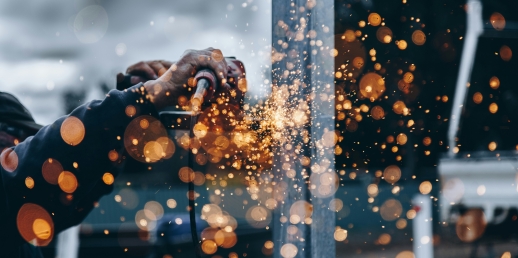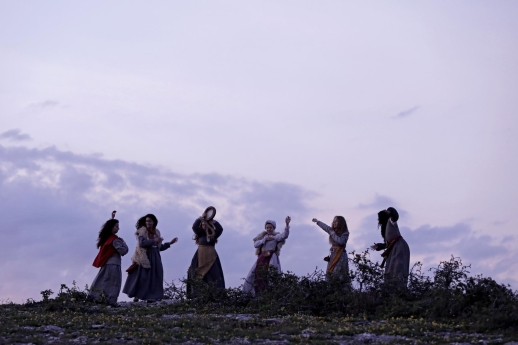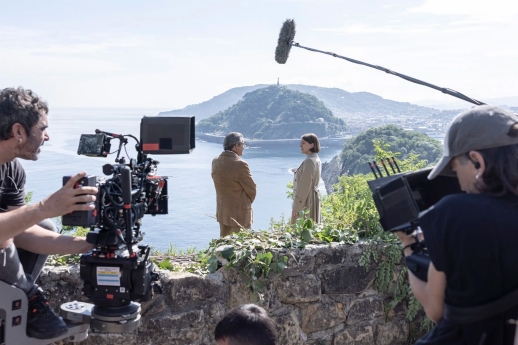“It may have all begun some 20,000 years before our era with a vulture bone pierced with three holes. This prehistoric flute, discovered in 1961 by the archaeologist Eugène Passemard in the caves of Isturitz (province of Basse Navarre), is the oldest musical instrument found in Europe. Its shape and the arrangement of its holes suggest that it is the ancestor of the modern txistu (a three-holed flute) and its Souletin variant, the xirula.
Another discovery is also a testament to an ancient Basque musical culture: in 1960, the ethnologist José Miguel de Barandiaran uncovered, during excavations in the cave of Atxeta, a few kilometres from Gernika (province of Bizkaia), a three-pointed deer antler. This is a horn capable of producing up to four different notes. Currently on display at the Archaeological Museum in Bilbao, the instrument could date back some 8,000 years. The practice of music was probably accompanied by an indigenous vocal tradition. But in the absence of documents or tangible evidence, certainty must give way to hypotheses and questions", Kattalin Totorika
Basa Ahaideak, wild melodies
11 Feb 2025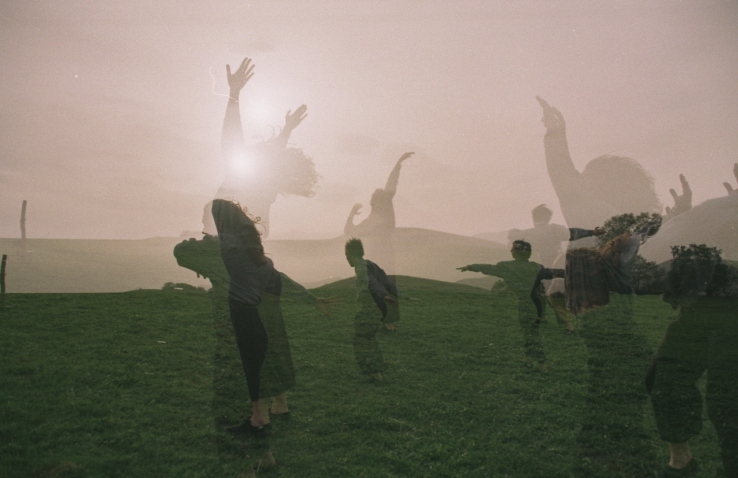
Rich in mystery, the Basque people have been connected to music and song since time immemorial. Like their language, Euskara – one of the oldest in Europe and predates Indo-European languages – Basque music, sounds and melodies have reached us solely through oral tradition. Thanks to the miracle of the human voice and memory, the Basque language, songs, and music have been transmitted and transformed from generation to generation, and continue to be shared today.
When we think of Basque music, what immediately springs to mind is singing. From popular songs shared in festive settings to sophisticated choral singing, not to mention bertsolaritza – improvised rhyming verses put to simple melodies – Basque singing has achieved great renown worldwide.
However, in the Basque Country, there exists an ancient and lesser-known practice called basa ahaide, which can be roughly translated as «wild melodies» This unique tradition is practiced only by a select few initiates.
Singing offers a beautiful synthesis of the fundamental values of a community. Trying to understand the basa ahaide is an effort to gain deeper insight into the Basque people and what endures in their culture. From its unknown origins, this ancestral art has inspired a young generation of artists who, through their work in contemporary creation, they pass on and transform this tradition from generation to generation, ensuring it can be shared even today.
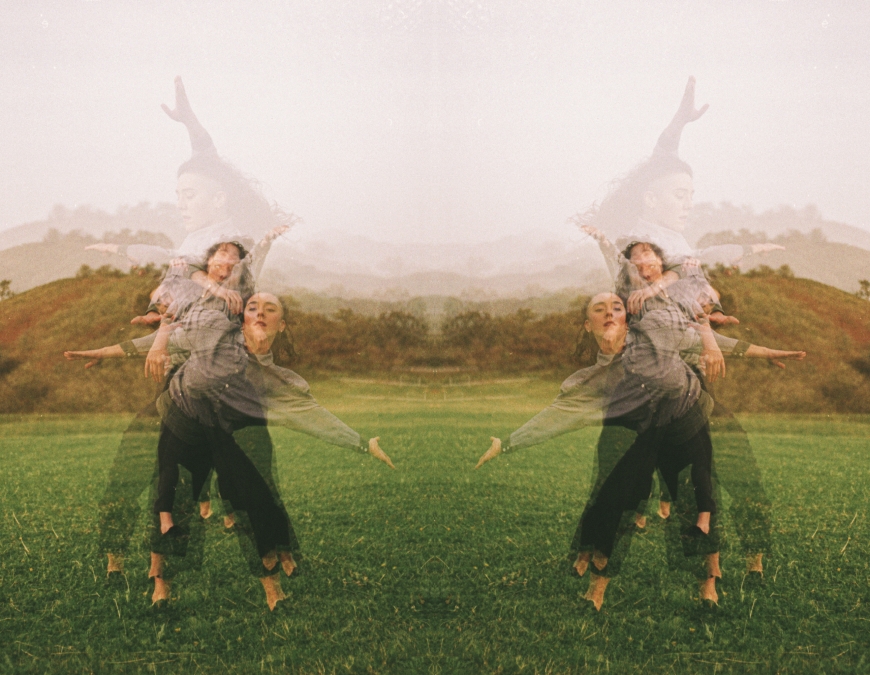
Basa ahaide
Amid the ancestral legacy of the Basque Country, basa ahaide stands out as a treasure. It is known that a cappella singing without lyrics was practiced by the shepherds who lived on the peaks of Soule (Zuberoa in Basque), the smallest and most mountainous of the Basque provinces. The region, full of chasms and dolmens, has been inhabited since prehistoric times. It is the sanctuary of a culture and a language whose roots are sunk deep into the earth. It was in this very place that the shepherd-singers created and transmitted the basa ahaide.
In Basabürüa, a small valley in the limestone Massif des Arbailles, surrounded by the splendour and grandeur of nature, the shepherd, alone on the peaks, unleashes a song that is both captivating and intimate. Undoubtedly, this is a way to escape solitude and connect with the wild world around him. With his voice, he translates the flight of the goshawk (belatxa) or the eagle (arranoa), conveying his fascination and humility in the presence of nature´s vastness. The shepherd never sings alone, because the mountain, with its powerful echo, makes his voice heard.
"Soule, Zuberoa in Basque, is the most mountainous province in the French side of Basque Country, with peaks that rise up to 2,500 metres. In the limestone karst, some of the world´s deepest chasms emerge, while deep gorges carve their way through the mountains ... A mountain covered with summer meadows and magnificent forests, especially beech, and on the peaks, black pines. Bears and wolves still roam these heights, while the sky is filled with migrations of birds, ranging from the smallest to the largest, such as the unforgettable flights of cranes. In addition, great birds of prey, including griffon vultures, eagles, bearded vultures, and even jackdaws, reign in the air. These birds receive the extraordinary wordless songs known as ‘basa ahaide,’ the true sonic calligraphy of their flights, which were once expressed through dance by the singers themselves. These highlands are the domain of the shepherds who spend the summer, from May to October depending on the year, with their large herds", Beñat Achiaryi
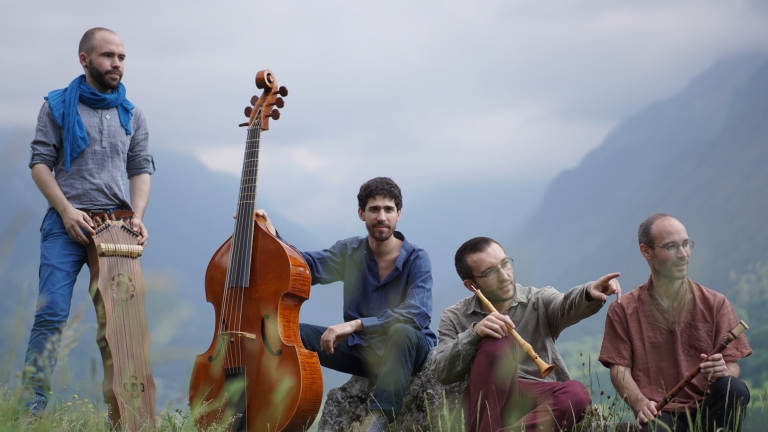
The basa ahaide is more than just a song; it represents an intimate connection between humans and their living environment, with which they become one. It is the expression of a deep and vital relationship that unites the Basque people and the land, the expression of complex exchanges between humans and non-humans. If basa means ‘wild’ in the sense of uncivilised, it is the forest, the mountain, the bird, nature as it existed before the appearance of the first human being. It is the threshold crossed through song, where one relinquishes a part of their human identity. These wild songs are the sole means through which humans can accompany the bird and trace the winding path of its flight, helping them understand their place in the world they inhabit. Humans seem to abandon their own bodies when performing the basa ahaide. Their voices no longer belong to them but rather to the landscape. They trace circles and gain height to rise above the peaks, swooping with the birds, retracing their flight through the undulations. The singer, through his voice, seems to have transformed himself into a bird.
"If there is a treasure in the Basque Country and throughout the Pyrenees, it is undoubtedly the art of Souletin singing. (...) In this region, where dance can rise with exceptional momentum and virtuosity, it is singing that is inherent and vital. A restless song, filled with magnificent melodies and elevated poetry, demands audacity, tenderness, mastery of breath, and complete immersion in the poetic experience; but with a profoundly subtle inner clarity, this song is shaped by familiarity with limits and is constantly reborn, always revived in the vertical present moment that transcends all other times", Beñat Achiaryi
A treasure trove for contemporary creation
Basa ahaide is also a treasure for the younger generations of Basque artists interested in contemporary creation. Song is a powerful means of awakening our awareness of the world and fostering shared values. We may no longer have access to that tool, or we may have forgotten how to use it for anything other than performance.
Today, these young artists are revitalizing this vast traditional repertoire by drawing inspiration from diverse cultures and languages. Each in their own way contributes to ensuring that Basque culture remains relevant in the present and across the globe.
Julen Achiary
Julen Achiary is undoubtedly the leader of this new generation. He is the driving force behind extensive research and creates work that appears boundless. To expand this solo singing beyond its original scope, he has collaborated with virtuoso musicians. He founded Haratago alongside Jordi Cassagne on double bass and viola da gamba, Nicolas Nageotte on clarinet and duduk, and Bastien Fontanille on hurdy-gurdy and banjo. The quartet lends an orchestral dimension to this traditionally a cappella singing, unhesitatingly blending the basa ahaide with sounds from various regions. Haratago invents a language that is both singular and plural, of yesterday and today. Julen Achiary has been surrounded by these songs since childhood. His voice, rich in inflections and deep improvisational skill, is among the few capable of conveying the full power of the basa ahaide.
"I wanted to share these precious modal melodies that are so well hidden within our valleys so that they can spread their wings, carried by a new air. I spent years searching and forging the way that best suited me: there have been many encounters, many travels, many trials and experiments. Haratago is the result of this long quest, these years of research and it is an ensemble through which we continue to search, explore, invent and create. It is indeed a creation as this living tradition is in perpetual movement, so much so that it needs invention to keep on living, and we tackle this challenge with both modesty and joy, firmly rooted not only in our ancestral culture but also in our contemporary approach", Julen Achiary
Oihan and Elsa Oliarj-Ines
Oihan, the brother, is a musician and composer. Elsa, the sister, is a film-maker. The Oliarj-Ines siblings spent their entire childhood in Soule. In 2017, they began to rethink the ahaide basa. Two projects emerged from their adventures: an album, ‘Oihaneko Zühainetan’, and a film, ‘Basahaideak – Les Airs Sauvages’. Oihan is the originator of this creation. Following Julen Achiary´s example with Haratago, Oihan Oliarj-Ines aims to introduce new harmonies to these old songs. However, in this case, no new songs are created, nor are traditional instruments used; instead, he uses electric guitar, bass, keyboard, drums, and brass. Oihan composes for and from the basa ahaide he finds along the way. Behind the steering wheel, he embarks on a journey to meet those who hold the secrets of these songs, listening to them and recording them a cappella against the backdrop of the mountains. Elsa, camera in hand, follows him along his entire route. She records the encounters from the outside, as well as the inner questions. Oihan searches. Sometimes he collides. He composes. Drawing from his careful observation, he envisions a new kind of music that complements the song from underneath, skilfully enhancing without ever seeking to alter. But it is also new music that is for listening to and seeing.
Bilaka Kolektiboa + Eneko Gil
With this young group of dancers and musicians from Bayonne, the exploration of basa ahaide is now expressed through dance. Yes, in this choreographic and musical creation, we find the voice of Julen Achiary set to a hypnotic orchestration by the Navarra composer Paula Olaz. But beyond the music, it is the choreography of Eneko Gil that makes basa ahaide. The style of the dance and the movement is based on the observation of birds. The five dancers of Bilaka embark on a determined march that guides them into a trance-like state. Through repetition, they challenge the limits of their own bodies, aiming to dissolve their contours and merge with their surroundings. They pound the ground with their footsteps, circling round and round, and ultimately rise to a connection with nature that echoes that of the singing shepherd. Through song, but first and foremost through dance, the performers merge with the beauty of the world. Bilaka´s ‘Basaide’ is a total experience.
In their own unique ways, these young artists activate and preserve the ancient tradition of basa ahaide singing. They ensure its enduring presence and reveal the beauty of the Basque people, who view their songs as a means of maintaining a connection between the individual and their environment – a way to retreat and allow the body to merge with the world.
